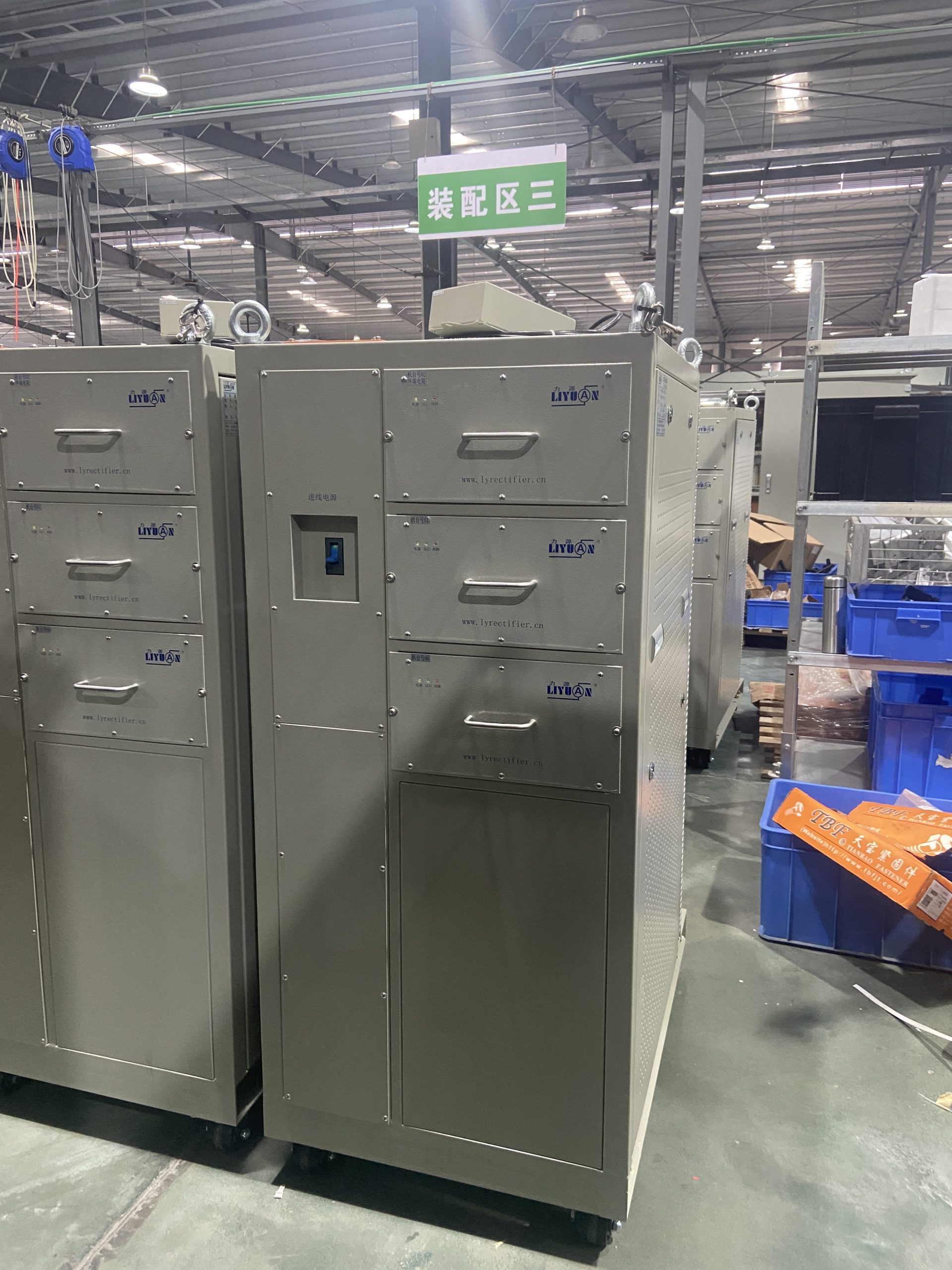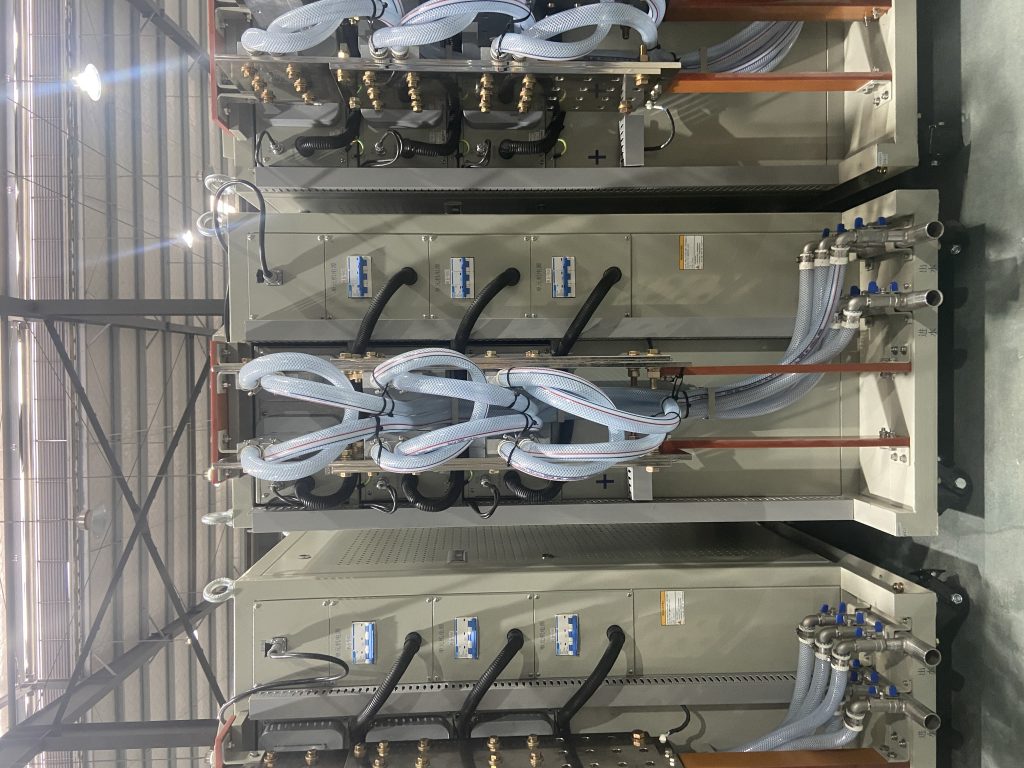Products
Industries
The electrolytic hydrogen production rectifier is a device used for electrolytic hydrogen production. Its working principle mainly involves the electrolysis process and the function of the rectifier.
In the process of electrolytic hydrogen production, water molecules in the electrolyte are electrolyzed into hydrogen and oxygen, of which hydrogen is generated at the cathode and oxygen is generated at the anode. The function of the rectifier is to convert the AC power in the AC power supply into DC power to provide the current required for the electrolysis reaction in the electrolyzer.
The electrolytic hydrogen production rectifier controls the direction and size of the current so that the electrolysis reactions at the cathode and anode proceed separately, thereby producing pure hydrogen. The rectifier is usually composed of electronic components such as transformers, rectifier bridges, filter capacitors and stabilizing resistors. By adjusting the output current and voltage of the rectifier, the efficiency and output of electrolytic hydrogen production can be accurately controlled.
In general, the working principle of the electrolytic hydrogen production rectifier is to convert the AC power supply into DC power to support the electrolysis reaction of water in the electrolyte, thereby producing pure hydrogen.

